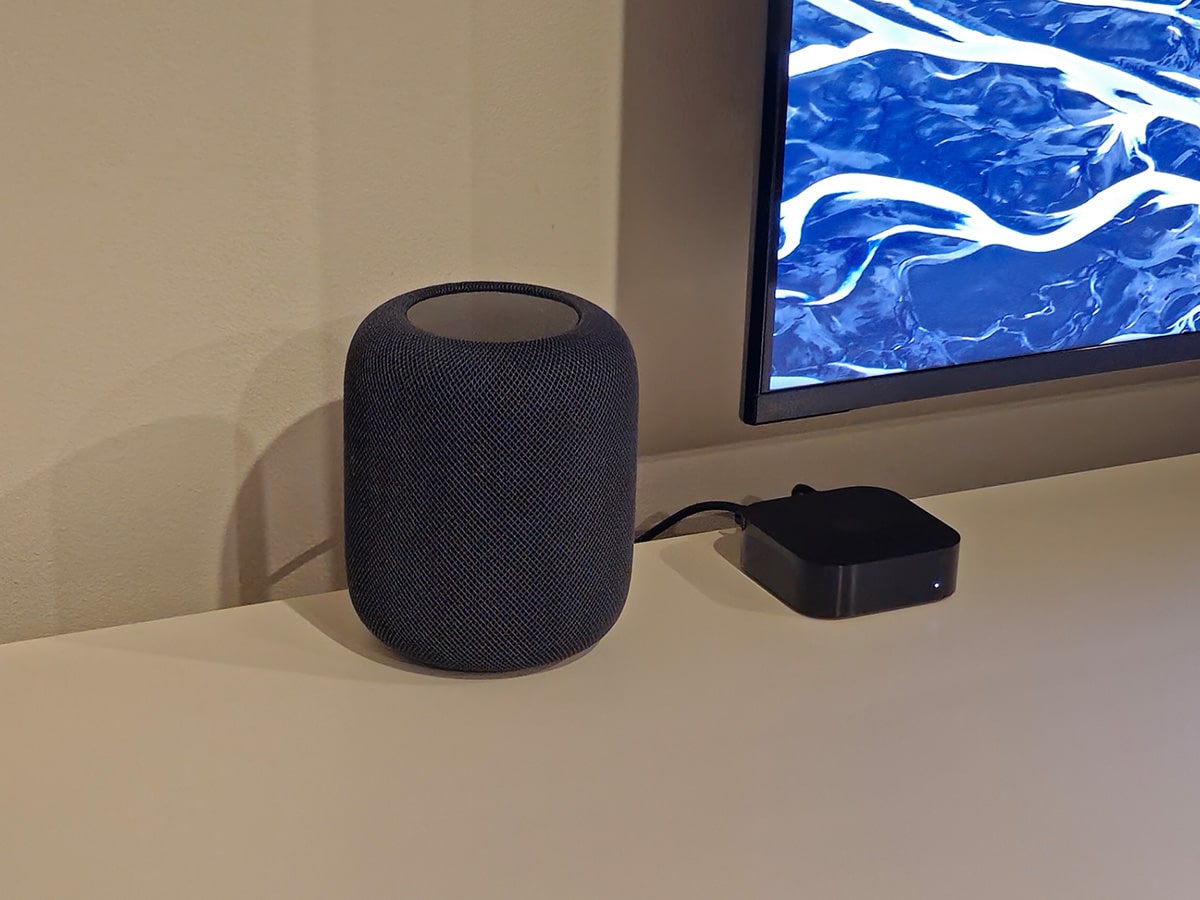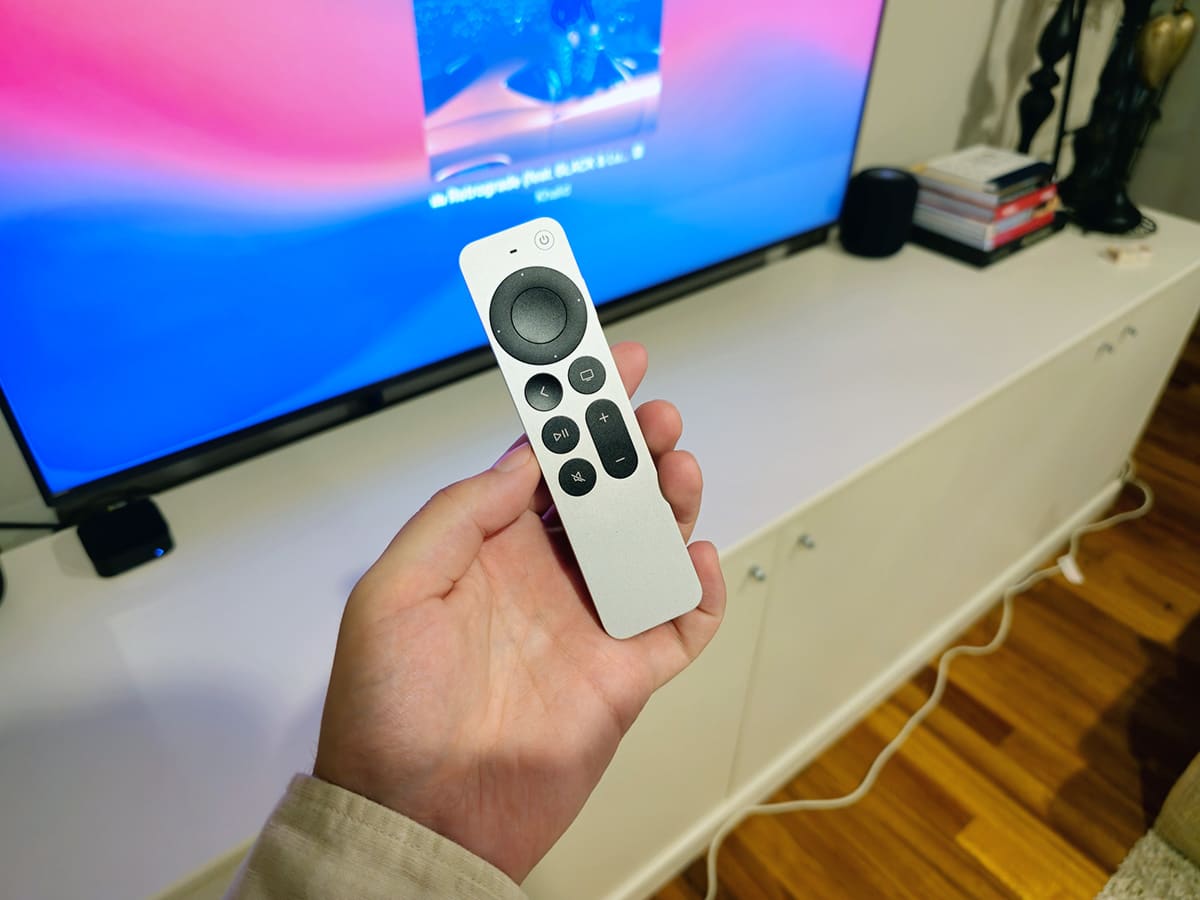
Published:
Readtime: 7 min
Every product is carefully selected by our editors and experts. If you buy from a link, we may earn a commission. Learn more. For more information on how we test products, click here.
When we said the Apple new HomePod looked suspiciously like the old one, we weren’t kidding. Now we have the second-generation HomePods in hand, they’re remarkably similar. In fact, they’re physically identical. But that hasn’t stopped us from putting the Cupertino giant’s smart speakers to the test, and we’re willing to make a big statement out of the gate. Don’t buy one. Buy two.
If you’re looking to buy one Apple HomePod to place on your kitchen counter, don’t. Instead, buy two Homepods, pair them together in stereo and enjoy Dolby Atmos, Lossless Audio, and Spatial Audio from what is one of the better home theatre speaker systems you can get for under AUD$1000. Here’s why.
Related: This Free App ‘Turns Your Apple Watch Ultra Into a Dive Computer’.

Unboxing the Apple HomePod
First and foremost, you expect a level of quality with any Apple product and the HomePods stay true to the brand ethos. They measure the same 6.8 inches in height and 5.6 inches in width as the previous generation and they have the same flat base. Some users have reported that the White HomePods leave ring marks on tabletops, but we’re pleased to report our Midnight pair hasn’t left any marks behind. If you’re worried, we recommend you go for the stealthy pair.
What’s Under the Skin?
Under the skin, the second-gen HomePod offers the brand new S7 chip, first seen in the Apple Watch Series 7, that’s integrated with software and system-sensing technology for advanced computational audio.
The speaker count sits at five for the new generation, down two speakers, but the custom-engineered 4-inch high-excursion woofer remains alongside the beamforming array with each tweeter having its own neodymium magnet. In short, they sound great.
If Siri is your preferred voice assistant, there’s a four-microphone setup that we found responds particularly well from nearby rooms. Unfortunately, Siri still remains one of the least helpful voice assistants on the market. However, it does do a decent enough job of handling basic functions such as broadcasting messages between home devices, playing sounds on multiple speakers, and choosing different songs.
We found Apple’s Ultra Wideband technology particularly useful when Siri decided to take a rest break. It allows you to transfer whatever you’re listening to on your phone to the HomePod wirelessly by holding your iPhone near the speaker. Finally, there’s a temperature and humidity sensor that can control blinds and fans.
Related: Ranking Every iPhone Model in Order of Release

How Does the Apple HomePod Work?
While it’s a smart speaker at heart, what Apple really has on its hands is its first home theatre speaker system. Two HomePods are enough to replace your soundbar, they probably have more tech than your soundbar, and the only downside of the system is that you’re restricted to the Apple way of life. One that’s only fully utilised by having ALL the Apple products. No Spotify etc. and no workaround for Android.
You can connect a pair of HomePods in stereo through the Home app, however, you’ll need an Apple TV 4K if you want to connect them to your TV. The good news is the Apple TV 4K is a very good product, it’s one of our favourite streaming devices on the market, and you should check out our review if you want to know more about it.
Once you’ve set up your Apple TV, it’s as easy as plugging in all the HomePods, setting up an Apple Home through the app, and then your HomePods will ask if you’d like to connect them together in stereo. No cables from the speakers to the TV, none to the Apple TV, and only one removable cable that needs to be routed to a wall socket. It’s clean, neat, simple, and very Apple.

How Does the Apple HomePod Sound?
Remember when we said that the only way to get the most out of your HomePods is by having ALL the Apple products? Well, you can add Apple Music to that list, because the HomePods take advantage of the brand’s signature Spatial Audio with Dolby Atmos via Apple Music (not available on Spotify). Our verdict? It’s worth it.
While the HomePods are fairly stout on the hardware front, it’s the software that really takes the sound quality to the next level. We were particularly impressed by the “room sensing technology,” that senses the sound reflections to determine the speaker’s position. And while the technology isn’t unique to the HomePods, it works as described.
As you can see from the photos above, our speakers are sitting quite close to a wall, it knows that, so the HomePods project the sound outward rather than bouncing it off the wall.
Just like the cameras on the new iPhone, the software can also manipulate audio to make the most of what it’s given. It knows how much bass to give, how much high tone to cut out, and where to bolster the mid-range. It’s impressive, but it’s not something a true audiophile would appreciate as the sound is great but never excellent. If you’re using a single HomePod it can sound a little muddy and processed.
The HomePods aren’t limited to music either, they can extract Dolby Atmos audio from film and TV streaming services. Unfortunately, that means you’ll be forking out for another round of expensive subscriptions. For example, to get Dolby Atmos on Netflix, you’ll need a plan that supports streaming in Ultra HD, a Netflix-capable device that can play Dolby Atmos (Apple TV 4K), a Dolby Atmos-capable audio system (Apple HomePod), a TV with HDMI eARC, and an HDMI 2.1 cable. You have to pay to play the high-quality audio game, but we think it’s a worthy investment.
Related: Apple Unveils 3 New Apple Watches Including $1,299 ‘Ultra’ in Titanium

Should You Buy an Apple HomePod?
If you’re an Apple fanatic, we recommend you only consider buying two HomePods. As expected, the system integrates seamlessly with your television (assuming you have an Apple TV 4K) and offers some of the best sound quality we’ve ever experienced from a sub-$1000 AUD speaker system. However, owning one Apple HomePod can be limited in both sound quality and practical application.
Of course, if you don’t already have an Apple Music subscription, an Apple TV 4K, and a high-quality streaming service, you won’t be able to make the most of the sound. And if you’re using an Android phone, forget it altogether. In that case, you may want to look elsewhere for your home theatre needs, because unless you’re a ride-or-die Apple user with a keen interest in decking out your smart home, you won’t get the most out of the features.
How Much Does the Apple HomePod Cost?
The Apple HomePod (2nd Gen) is priced at $479 AUD and is available in either White or Midnight via the links below.
Buy it here (Apple) Buy it here (Harvey Norman) Buy it here (Officeworks)

You’ll also like:
‘World’s Most Powerful’ Processors: Apple M2 Pro and M2 Max Chips Unveiled































Comments
We love hearing from you. or to leave a comment.